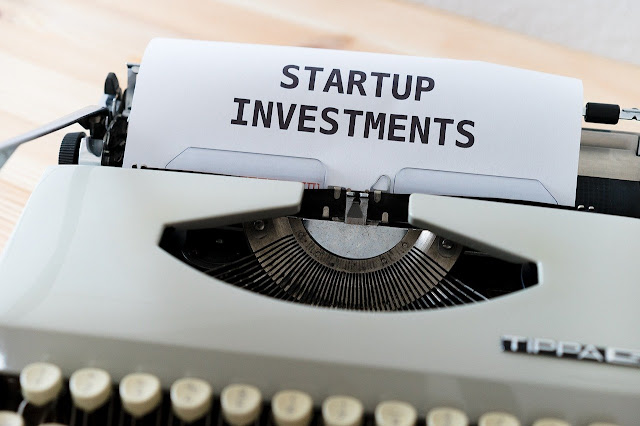Traditional Businesses and the Startup Tale’s Distant Fate?
There has lately been much brouhaha about startups and predominantly about their valuations in the Indian business landscape. The startup ecosystem is gradually shifting from a nascent stage to slightly near maturity, as seen with the number of unicorns India has produced in the last decade or so. It has created a niche for itself, introducing as a new asset class for investors all around the world. Though this asset class bears the highest risk, it has the ability to produce phenomenal results if the startup ticks with the market and consumers. Startups in India have been celebrated for their ability to attract investments from large private equity firms globally. The youth’s aspirations has been on the mountain peak as various startups have succeeded by achieving scale and targeting and capturing consumers. So what about traditional businesses as an asset class. What happens to the small cap, mid cap and large cap firms? What will the composition of the Nifty 50 look like in the next decade? These are paramount questions that investors raise as they decide how should they allocate their portfolios to remain agile and nimble with the ever-changing business landscape.
Traditional businesses have been operating since the last few decades/centuries, acquiring for themselves an established and sustainable business model. Traditional business have in place immaculate and agile processes and systems, customer acquisition, customer retention, customer loyalty, strong moats (eg: their strong brand, economies of scale). The products and services of the firms have been accepted and trusted by consumer over the years creating large sustainable markets for themselves. High entry barriers prevent new entrepreneurs or firms to enter the incumbents’ space and industry. These businesses possess a strong backbone i.e. their hierarchy and already established and efficient departments for seamless operations in the firm. Traditional businesses are a powerhouse of financial data for investors as they can scrutinize and analyze past data to project future quality of earnings of the firm. They can base their decisions on valuation, on the rich data they have been served in the plate. There is a plethora of tools to conduct financial analysis of the data before making investment decisions (PAT margin, EBITDA margin, financial ratios, level of debt to name a few ). This helps them to make wise and prudent investment decisions for the future.
While reading the news have you all ever wondered how impressed and intrigued we are reading about various startups. We feel like there are here to change and conquer the world for good. However considering from financial perspective there is more than meets the eye. But before that let’s see what is a startup?
Startups are innovative pathbreaking ideas that need to be executed by attracting huge amounts of funds from investors who wish to risk their money at pre-seed level. Startup businesses are initially based on the concept and ideology of trial and error which can leave its early investors with little or absolutely nil returns. They are on a mission to change consumer habits and lifestyle. Address pain points, need in society or in fact cultivate and create a psychological need in the consumers mind. In simple words they are normally enablers, aggregators, facilitators targeting a large audience. Delivering consumers a wide range of choice, convivence and best price points, emphasizing on disintermediation by harnessing technology. They are all over the place be it changing the transportation paradigm, hotels and leisure models, workspace models, education delivery, healthcare delivery, consumer markets. Introducing sponsorship based models, subscription based model, private labelling, freemium models, fintech, biotech, gaming, AI and ML, robotics in the business ecosystem.
One interesting aspect of startups that should be noted is that they harness technology to create wonders. Leveraging technology can not only enhance their ability to target consumers but also propel them to scale up exponentially compared to traditional businesses. Only since a decade a or so traditional businesses have embraced the use of technology with open arms to remain flexible and contingent in the new business environment. However they fail to achieve the scale startups can reach within just 3-4 years. Sounds incredible right? But investment in this asset class involves immense amount of risk and is not a cup of tea for risk averse investors. Several factors need to be soundly deliberated upon if an investor wants to make a prudent investment.
It is imperative to analyze the founders or his/her co-workers’ ability to follow, execute and implement their aspirations, passion, vision with regards to their idea and start up business. Their capability to accept the reality and remain flexible plays all the more critical role in the success of the startup. Recognizing a genuine founder is equally important in today’s age not only for investors but also for the fate of the startups. In startups founders are the pillar and rock that supports and runs the business towards success, in congruence with the managements in traditional businesses.
Unfortunately startups lack financial data to support their activities and operations which makes it all the more difficult for investors to justify and corroborate their success and reliable valuation. Valuation of startups can be immensely inflated based on the future, however as the saying goes ‘the future is uncertain’. Nobody can predict what will happen in the future and if the startup will be able to create substantial returns for their investors. It all depends on the entrepreneur’s hard work, usability and practicality of their product or service, USP of their product/ service, consumer demand and its ability to broaden its reach nationally and internationally (scale up). All the more in the initial years of a startup they have a tendency to burn enormous amounts of cash leading negligible profits and dominant losses in bold underline. Now here’s the risk element that makes investors skeptical to invest in this asset class.



Comments
Post a Comment